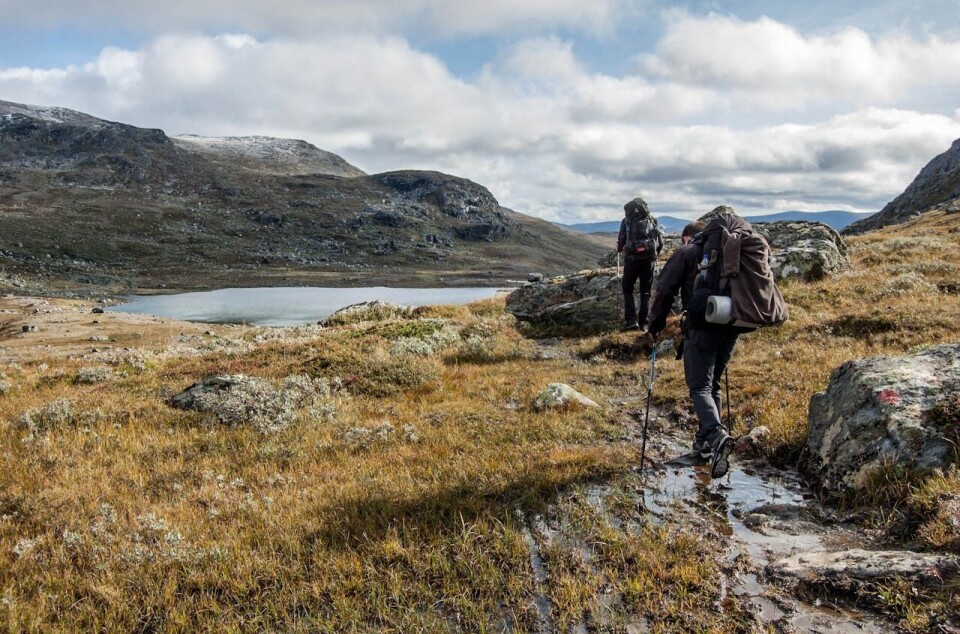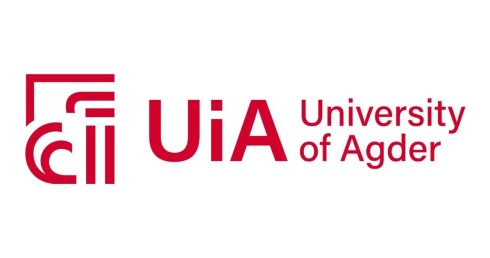THIS CONTENT IS BROUGHT TO YOU BY THE University of Agder - read more
Teachers in outdoor recreation faced a challenge when a blind student enrolled in the course
From the first year of school, there's an ideal that teaching should be tailored to each student. But how is this achieved in practice?

“There are many studies on adaptive teaching, but few that show how it's practised within sports and outdoor subjects in higher education,” says sports researcher Aron Laxdal from the University of Agder.
He recently published a study on adaptive teaching for students with disabilities. The study is based on interviews with four teachers.
Together with two other researchers, he looked at how four university teachers tailored their teaching for a visually impaired student. What insights did they gain from this?

The visually impaired student was studying for a bachelor's degree in health sciences and chose the one-year outdoor recreation programme as part of her studies.
Activities throughout the year
Blind students are uncommon in a subject like outdoor recreation. The subject is physical and is also largely about visual experiences.
“It was a great experience for both the teachers and students to have the blind student participate,” says Laxdal.
He believes both teachers and students learned just as much from the blind student as she did from them.
A lot of preparation and a lot of weather
It required a lot of preparation to bring a blind student skiing and to build snow caves. But if you choose outdoor recreation as your specialisation, skiing in snowstorms isn't the only challenge you'll face.
Throughout the year, students also go on bike rides. They go out in kayaks. They paddle canoes. They hike through woods and fields. They become familiar with high mountains, mountain lakes, and streams. And they are outdoors in both autumn and winter, regardless of the weather.
In addition to being on the water in a canoe, the students also go into the water. That they can swim is a given. That they have training or competence in lifesaving is recommended.
“This is undoubtedly a physically demanding course. Many trips were challenging even for able-bodied students. For example, students spent several days in the high mountains. They planned the trip, set up tents, and dug snow caves,” says Laxdal.
Adaptation for the student, but not of the programme
The visually impaired student received a programme tailored for her. Other students found it enriching that she was involved. So did the teachers. They were satisfied that she completed the course.
But Laxdal wasn't entirely pleased with that response.
“It's fine that they adapted the trips for the visually impaired by having students assist her along the way. She was exempted from various activities during the trips, but this wasn't always necessary,” says Laxdal.
Unnecessary exclusion
Laxdal explains that she was, for instance, excluded from birdwatching.
“It's hard to look for birds when you're visually impaired. But the key to finding birds is listening for where they are. In that area, the visually impaired had more training than the others,” he says.
Laxdal believes this was an unnecessary exclusion. In the study, he calls it a narrow view of adaptation.
“A broader perspective on adaptation could have led the teachers to find an alternative activity that still ensured she achieved the same academic goals as the other students,” he says.
Real outdoor recreation doesn't have to be daring
Laxdal points out that outdoor subjects are often based on a somewhat extreme view of nature: Trips and sleeping outdoors should ideally be a bit challenging to be considered outdoor recreation.
“Students will eventually enter jobs where they'll teach others how to navigate woods and nature. They must learn that meaningful experiences of nature can be made accessible for everyone,” he says.
The study reveals that teachers patched up the existing programme instead of making larger changes to the teaching.
“You don't have to arrange trips in difficult terrain. Real outdoor recreation doesn't have to be daring and challenging to be meaningful,” says Laxdal.
He believes the subject has much to gain from normalising challenges.
“We conclude that adaptative teaching shouldn't focus too narrowly on the individual. A broader perspective means that students should be able to choose from multiple activities to learn what they need,” he says.
The visually impaired student was qualified
It's worth noting that the visually impaired student was qualified for the course. She was physically fit and could both swim and ski before she started the course.
“The visually impaired student succeeded as a student. She became part of the group and completed the course. But I think teachers in outdoor recreation need to consider more how they can adapt courses and activities for more people,” says Laxdal.
Reference:
Laxdal et al. ‘She was a rare diamond’: teachers’ experiences of teaching a visually impaired student in a friluftsliv programme, Sport, Education and Society, 2025. DOI: 10.1080/13573322.2025.2488367
———
Read the Norwegian version of this article on forskning.no

This content is paid for and presented by the University of Agder
This content is created by the University of Agder's communication staff, who use this platform to communicate science and share results from research with the public. The University of Agder is one of more than 80 owners of ScienceNorway.no. Read more here.
More content from the University of Agder:
-
This researcher has helped more economics students pass their maths exams
-
There are many cases of fathers and sons both reaching elite level in football. Why is that?
-
How we used plants to protect ourselves from evil
-
What is it like for nurses to promote health behind bars?
-
This can make life easier for new maths teachers
-
Norwegian women were burned at the stake here




































